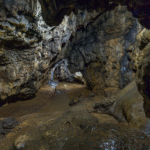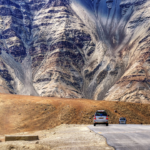Rishikesh, the gateway to the Himalayas, is a paradise for adventure lovers. The roaring waters of the Ganges attract thrill-seekers from across the globe, eager to experience the rush of white-water rafting. But many first-timers and even seasoned travelers ask, “Is rafting in Rishikesh safe?” The short answer? Yes, if you follow the right safety guidelines.

“Adventure without safety is just reckless risk,” and in Rishikesh, safety is a priority. This guide will help you understand the safety measures, risks, best practices, and how to make your rafting experience both thrilling and secure.
1. Understanding the Safety Measures in Rafting
Rafting is an extreme sport, but when done correctly, it’s completely safe. Here’s what ensures a secure experience:
- Certified Instructors: Always go with licensed and experienced rafting guides.
- Quality Equipment: Helmets, life jackets, and sturdy rafts are a must.
- Briefing Sessions: Guides provide safety training before hitting the rapids.
- Emergency Support: Rescue kayaks and trained lifeguards are always present.
Quote: “Safety is not just a precaution; it’s what makes adventure truly enjoyable.”
2. Levels of Rafting and Choosing the Right One
Rafting in Rishikesh is divided into different grades based on difficulty:
- Grade I & II (Beginner-Friendly) – Smooth flow with mild rapids. Ideal for first-timers.
- Grade III (Moderate Difficulty) – Exciting but manageable rapids.
- Grade IV & V (Challenging & Intense) – Strong currents and major drops. Suitable for experts.
If you’re new to rafting, start with Grade I or II and progress as you gain confidence.
3. Best Time for Safe Rafting in Rishikesh
Picking the right season plays a key role in safety.
- Best Time: September to June (Post-monsoon & summer months).
- Avoid Monsoons: July to August can be dangerous due to high water levels and strong currents.
4. Common Risks and How to Handle Them
While rafting is generally safe, being aware of potential risks can help you stay prepared.
- Falling Off the Raft: Stay calm, float on your back, and let the guide assist you.
- Capsizing: Follow your instructor’s training and hold onto the raft.
- Strong Currents: Always listen to your guide’s commands to navigate safely.
Pro Tip: Never go rafting under the influence of alcohol—it’s both dangerous and illegal.
5. Choosing a Reliable Rafting Operator
Your safety largely depends on the rafting company you choose. Look for:
✔ Government-certified operators
✔ High-quality safety gear
✔ Positive reviews and ratings
✔ Experienced and trained guides
6. Essential Safety Gear Checklist
Before you start, make sure you’re equipped with:
✅ Helmet (properly fastened)
✅ Life jacket (snug and secure)
✅ Paddle (firm grip, no cracks)
✅ Appropriate clothing (quick-dry and secure footwear)
Conclusion: Is Rafting in Rishikesh Safe?
Absolutely! When you follow safety measures, choose the right operator, and respect the river, rafting in Rishikesh is an unforgettable, safe, and adrenaline-pumping experience. As long as you listen to the experts and gear up properly, you can conquer the rapids without worry.
“Life’s an adventure, and every rapid is just another challenge waiting to be conquered!”









